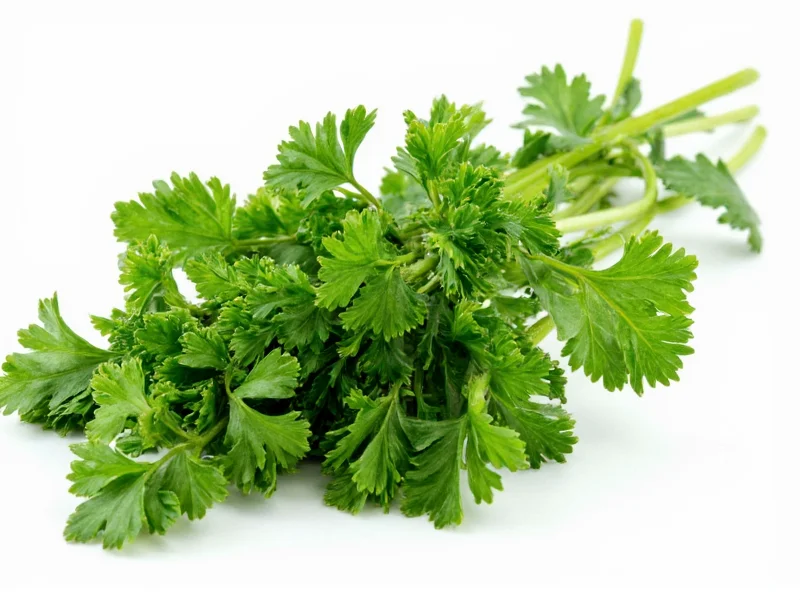Understanding how to properly substitute dried parsley for fresh is essential for home cooks facing ingredient limitations. While fresh parsley offers bright, grassy notes, dried parsley provides convenient shelf-stable flavor with proper technique. This guide explains the science behind herb substitution and delivers practical solutions for perfect results every time.
Why Dried and Fresh Parsley Aren't Interchangeable
Dried parsley undergoes dehydration that concentrates its essential oils while removing 90% of its water content. This process fundamentally changes both flavor profile and texture. Fresh parsley contains volatile compounds that provide its characteristic bright, slightly peppery taste, while dried parsley develops earthier, more muted notes. The structural difference means dried parsley won't provide the same visual appeal or textural element in finished dishes.
Precise Conversion Guidelines
Accurate measurement is critical when substituting dried herbs for fresh. The standard culinary ratio applies specifically to parsley:
| Fresh Parsley | Dried Parsley | Best Application |
|---|---|---|
| 1 tablespoon | 1 teaspoon | Sauces, soups, stews |
| 1/4 cup | 4 teaspoons (1¼ tbsp) | Casseroles, meatloaf |
| 1 cup | 1/3 cup | Long-simmered dishes |
Flavor Considerations for Successful Substitution
Dried parsley works best in cooked dishes where its flavor can fully integrate. The optimal approach varies by recipe type:
- For soups and stews: Add dried parsley during the last 20 minutes of cooking to preserve flavor
- In dry rubs: Combine with other dried herbs and spices for balanced seasoning
- For finishing dishes: Avoid using dried parsley as garnish - its texture won't mimic fresh
- In egg dishes: Reduce quantity by 25% as eggs amplify herb flavors
Maximizing Dried Parsley Flavor
Professional chefs employ these techniques to enhance dried parsley's performance:
- Bloom in oil: Heat 1 teaspoon dried parsley in 1 tablespoon olive oil for 30 seconds before adding to recipes
- Rehydrate first: Soak in warm water or broth for 10 minutes before use in cold applications
- Combine with acid: Add lemon juice or vinegar to brighten the earthy notes
- Layer flavors: Use 75% dried parsley plus complementary herbs like chives or oregano
When Substitution Doesn't Work
Certain applications demand fresh parsley's unique qualities. Avoid substituting dried parsley in:
- Tabbouleh and other fresh herb-heavy salads
- Garnishes where visual appeal matters
- Persillade (fresh herb condiment)
- Chimichurri and other fresh herb sauces
- Ceviche and other raw preparations
Alternative Substitutes When Parsley Isn't Available
If neither fresh nor dried parsley is available, consider these alternatives based on your recipe:
- Cilantro: Use 3/4 quantity in Mexican or Asian dishes (note distinct flavor profile)
- Chives: Substitute 1:1 for garnish applications only
- Dried celery leaf: Use 1/2 quantity in soups and stocks
- Italian parsley stems: Chop finely for stocks when leaves aren't available
Storage Tips for Maximum Freshness
Proper storage extends the usability of both forms:
- Fresh parsley: Store stems in water like flowers, covered with plastic bag in refrigerator (up to 2 weeks)
- Dried parsley: Keep in airtight container away from light and heat (6-12 months optimal)
- Freezing: Chop fresh parsley with oil in ice cube trays for ready-to-use portions
Common Substitution Mistakes to Avoid
Many home cooks make these critical errors when substituting dried for fresh parsley:
- Using equal volumes instead of adjusting for concentration
- Adding dried parsley too late in cooking (needs time to rehydrate)
- Using old, stale dried herbs with diminished flavor
- Substituting in applications requiring fresh texture
- Not adjusting for recipe moisture content











 浙公网安备
33010002000092号
浙公网安备
33010002000092号 浙B2-20120091-4
浙B2-20120091-4